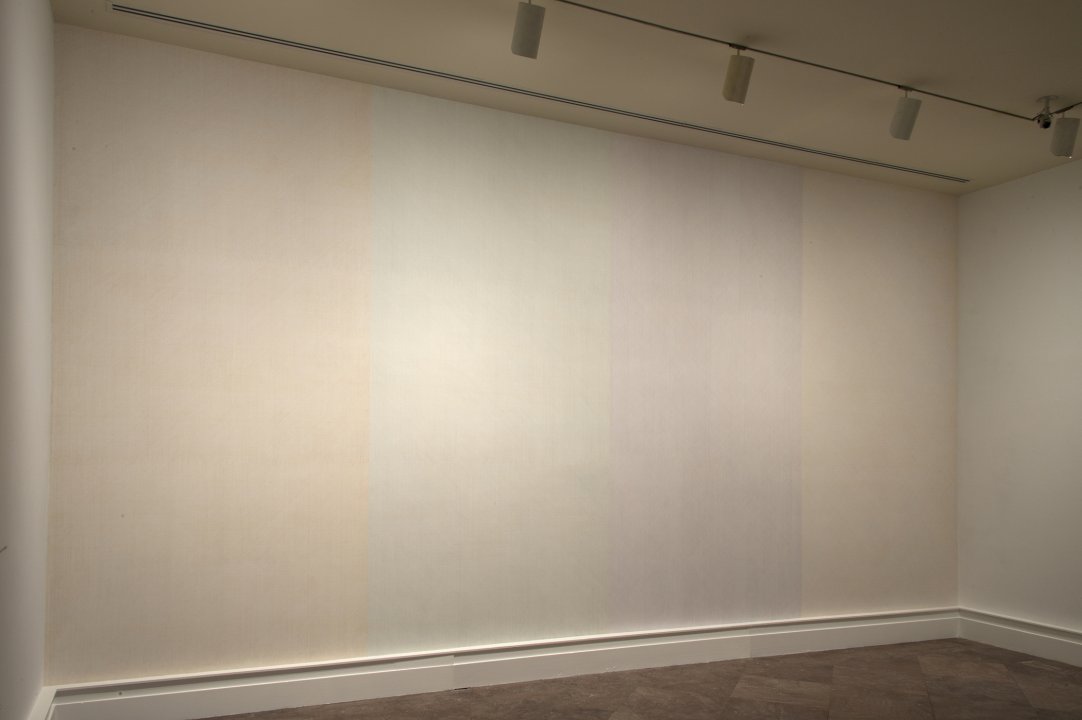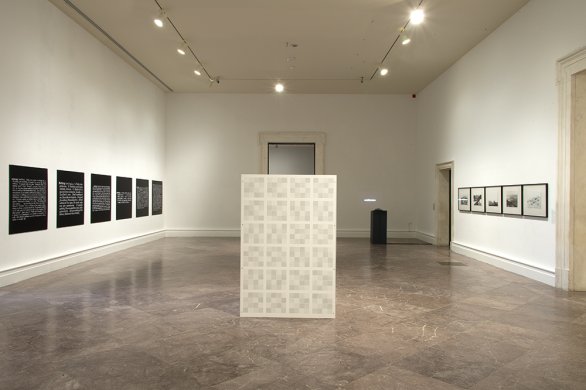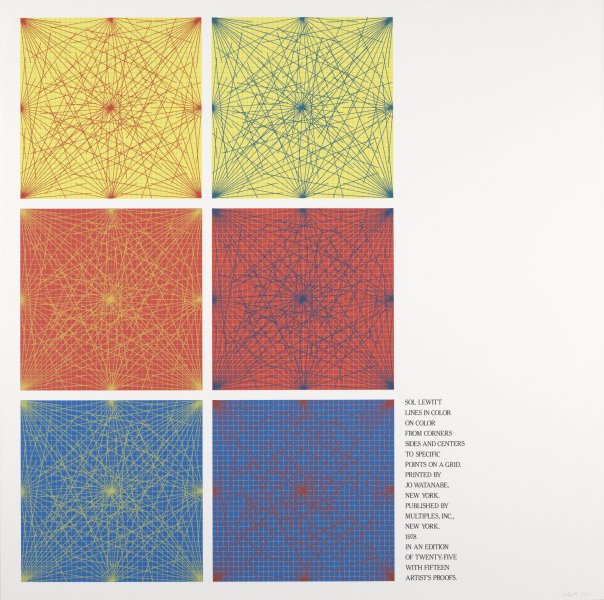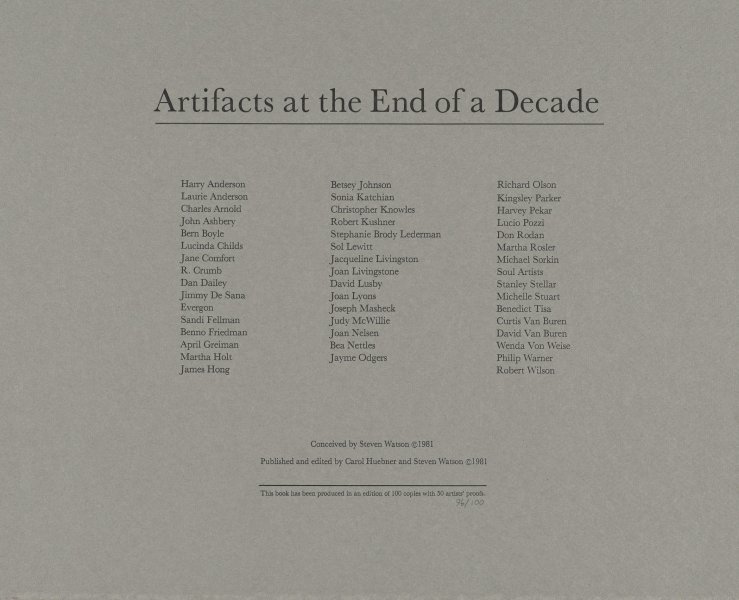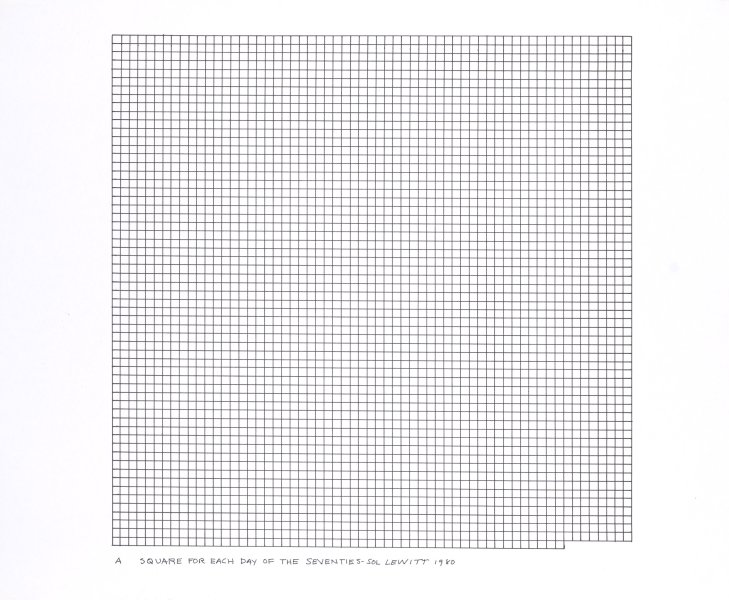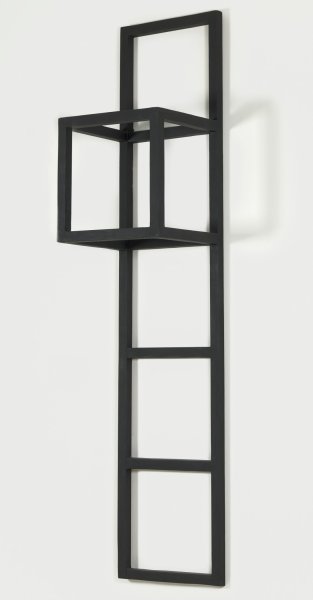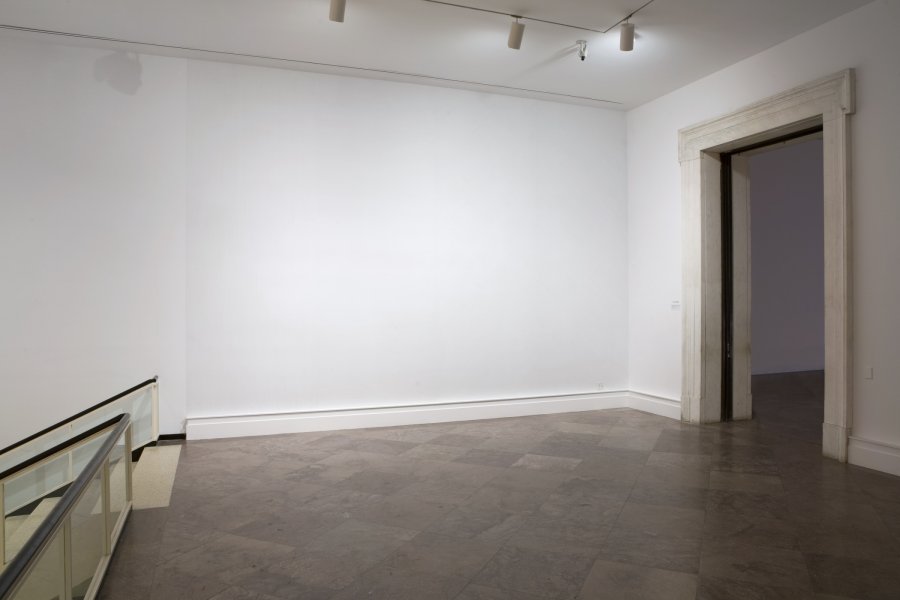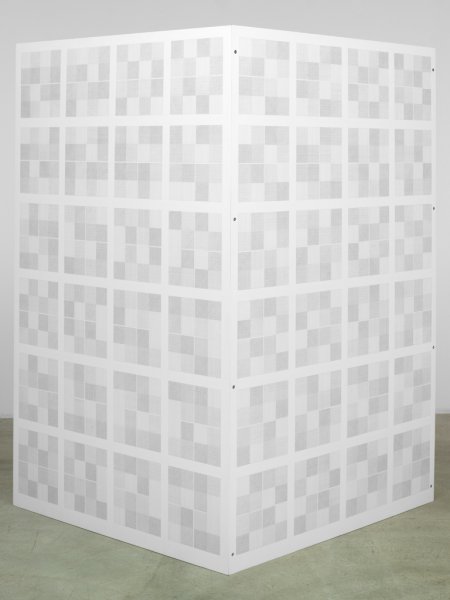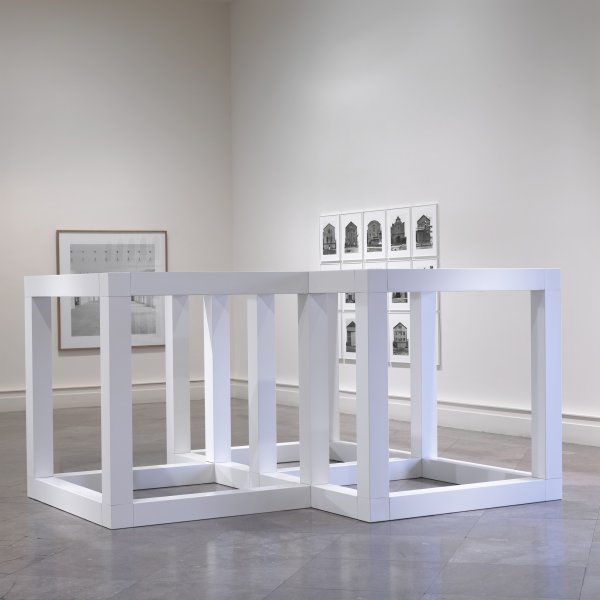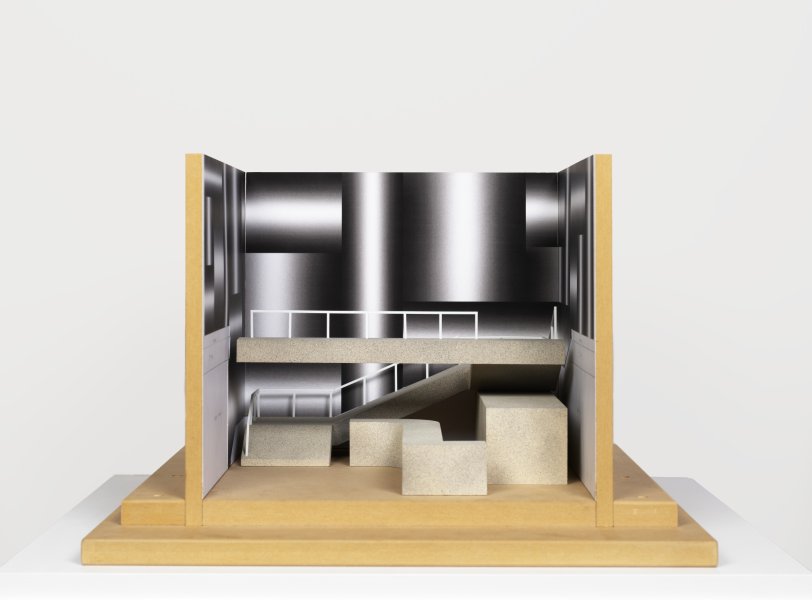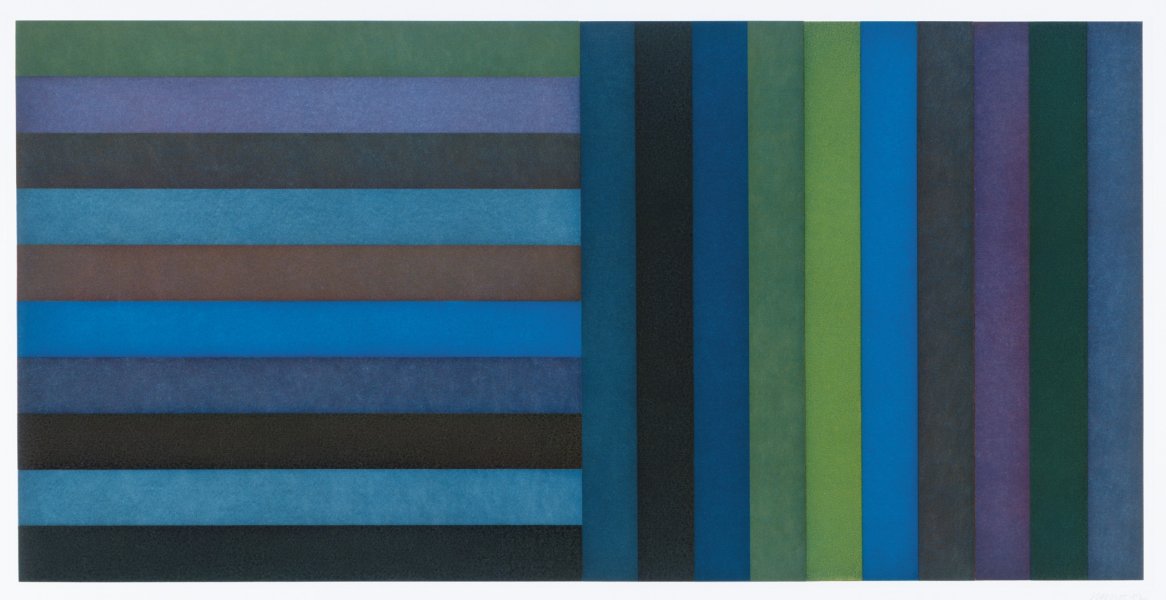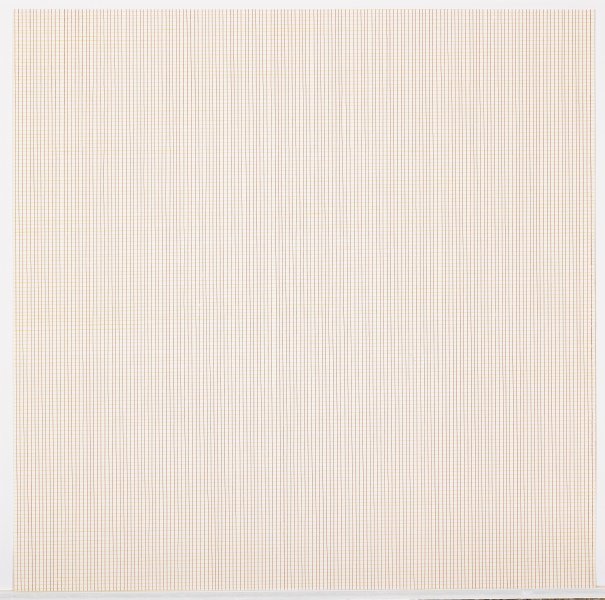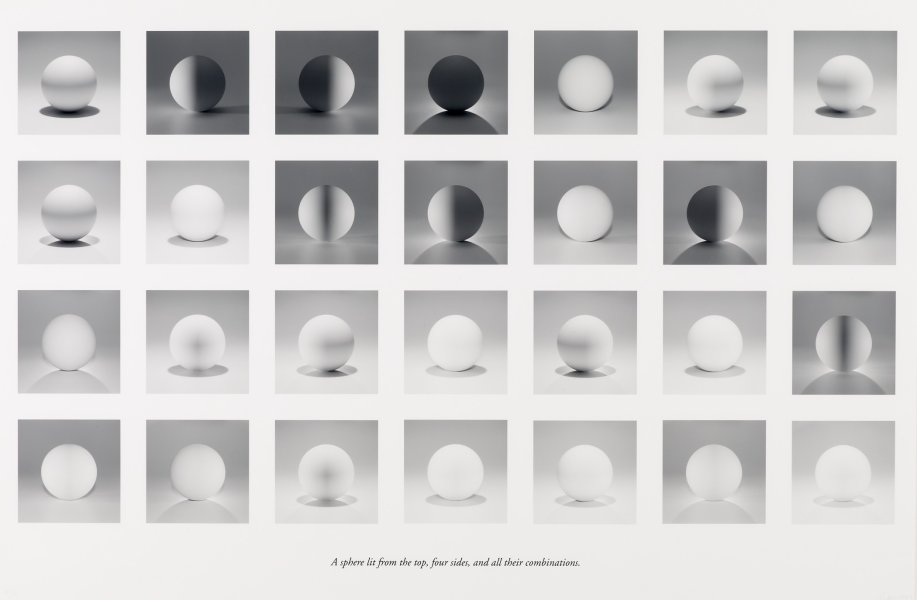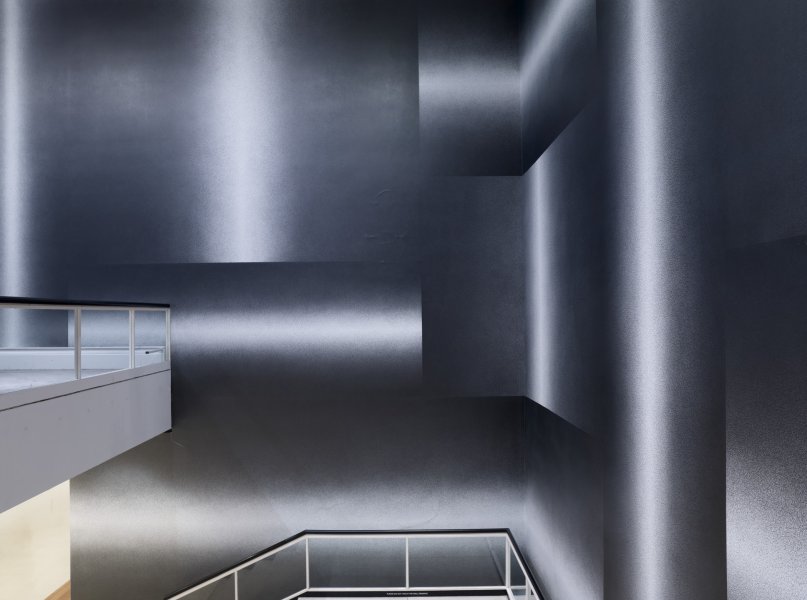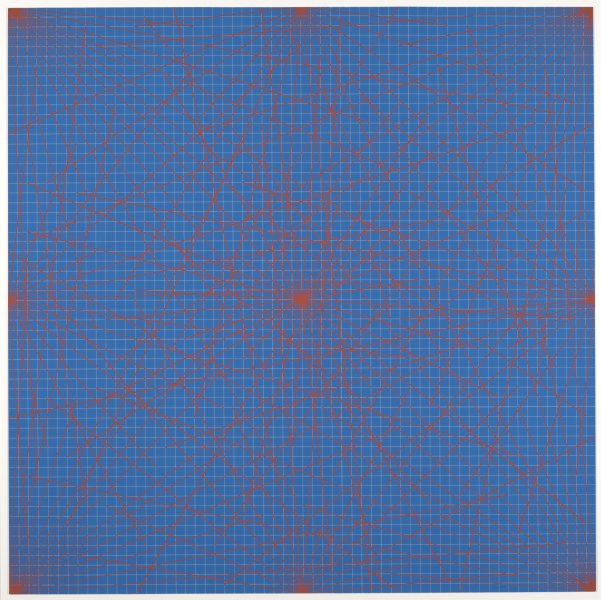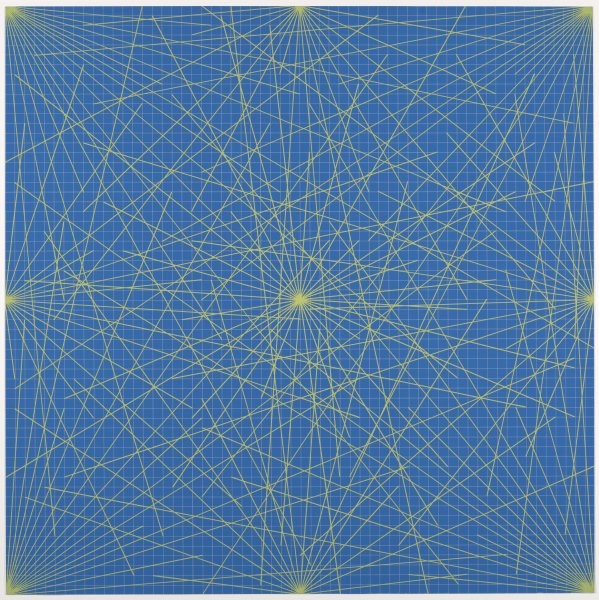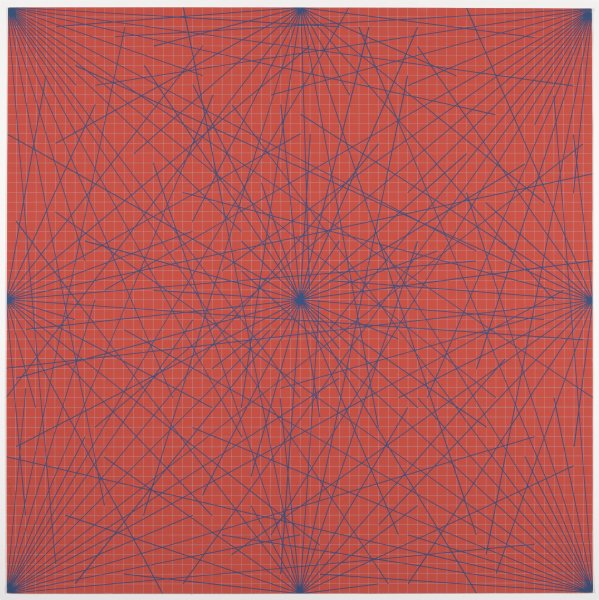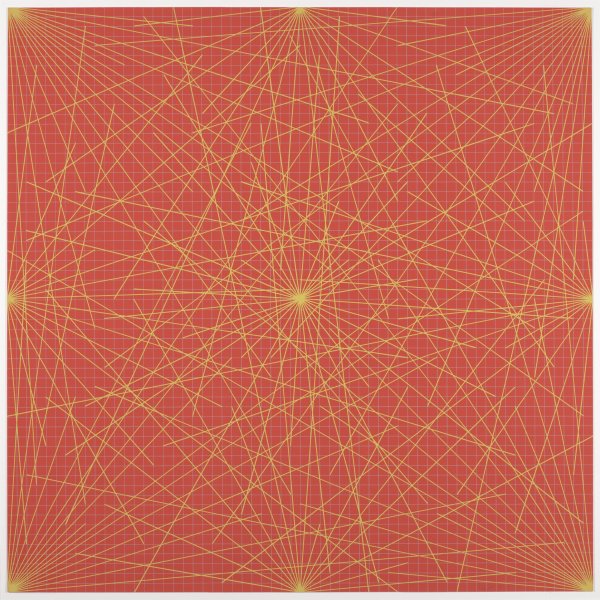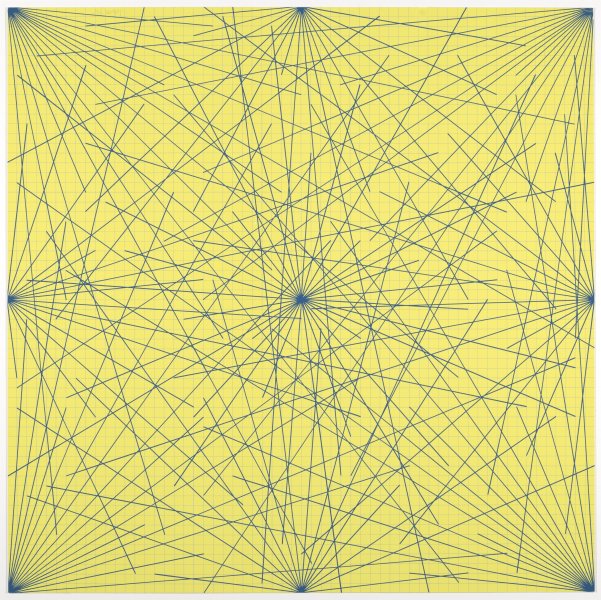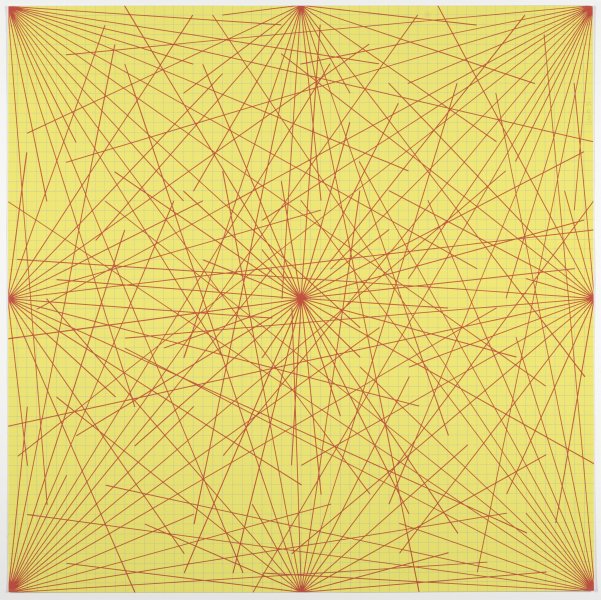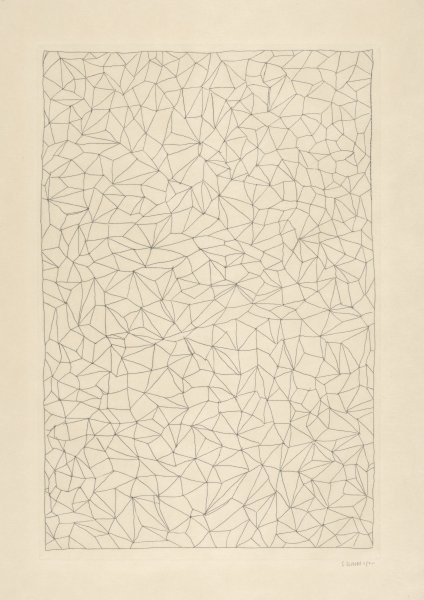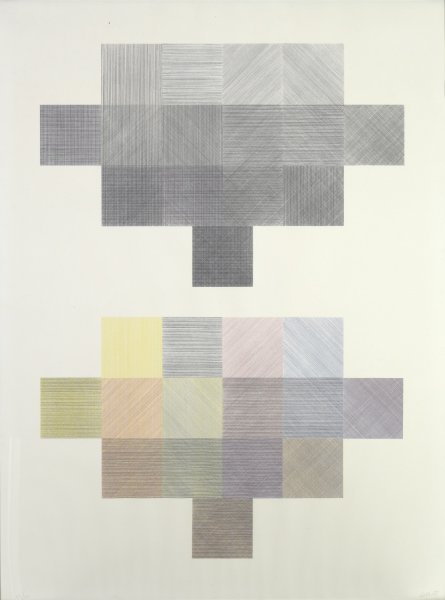Sol LeWitt
American, 1928-2007
Wall Drawing # 53, 1970
Artwork Details
Materials
red, yellow, blue, and black pencil on wall
Measurements
dimensions variable
Collection Buffalo AKG Art Museum
Credit
The Panza Collection and by exchange: George B. and Jenny R. Mathews Fund, Bequest of Arthur B. Michael, Albert H. Tracy Fund and Bequest of John Mortimer Schiff, 2015
Accession ID
2015:14.20
Sol LeWitt was primarily known as a sculptor when, in 1968, he installed his first wall drawing—which featured permutations of horizontal, vertical, and diagonal lines set within squares—at the Paula Cooper Gallery in New York. While the work was designed to be painted over at the end of the exhibition, its simple lines could be easily recreated, either by the artist or someone in possession of the artist’s instructions. Soon, LeWitt developed the system that came to characterize his new wall drawing practice: the artist would communicate such works through language and diagrams, and would employ others—often art and engineering students and eventually a dedicated team of installers—to execute them.
Wall Drawing # 53 was conceived for the artist’s first solo museum exhibition at the Gemeentemuseum in The Hague. It consists of a wall divided into four equal sections (either vertically or in a grid), each of which features three types of lines, drawn in color and graphite pencil, and superimposed on one another. Because the individual lines are only a pencil-point wide, the differences between each section are barely perceptible from a distance. However, when looking closely at the surface of the wall, the line types and colors become legible. Much like LeWitt’s sculptural practice, which investigated how modular cubic structures appeared to be either simple or complex depending on the angle from which they are viewed, the artist’s wall drawings challenge human perception.
Label from Looking at Tomorrow: Light and Language from The Panza Collection, 1967–1990, October 24, 2015–February 7, 2016
